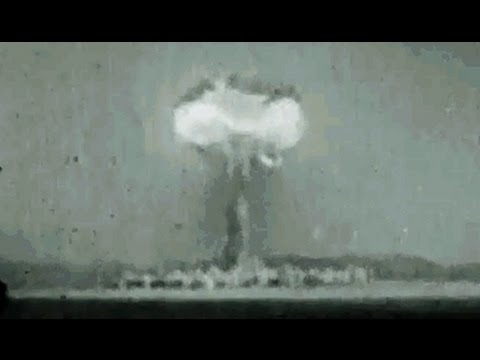more at
How to cope with all those tearful types after they dropped the big one(s). “One in a series of military training films that can only be described as post-apocalyptic.”
US Army Training Film TF8-2712
US Air Force Training Film TF1-8182
Public domain film from the Prelinger Archives, slightly cropped to remove uneven edges, with the aspect ratio corrected, and mild video noise reduction applied.
The soundtrack was also processed with volume normalization, noise reduction, clipping reduction, and/or equalization (the resulting sound, though not perfect, is far less noisy than the original).
A mass casualty incident (often shortened to MCI and sometimes called a multiple-casualty incident or multiple-casualty situation) is any incident in which emergency medical services resources, such as personnel and equipment, are overwhelmed by the number and severity of casualties. For example, an incident where a two-person crew is responding to a motor vehicle collision with three severely injured people could be considered a mass casualty incident. The general public more commonly recognizes events such as building collapses, train and bus collisions, earthquakes and other large-scale emergencies as mass casualty incidents. Events such as the Oklahoma City bombing in 1995 and the September 11 attacks in 2001 are well publicized examples of mass casualty incidents…
Declaration of an MCI
A mass casualty incident will usually be declared by the first arriving unit at the scene of the incident, though it can be declared by a dispatcher based on the information available from people who call an emergency number, such as 9-1-1 in the US, about the incident. A formal declaration of an MCI is usually made by an officer or chief of the agency in charge. Initially, the senior paramedic at the scene will be in charge of the incident, but as additional resources arrive, a senior officer or chief will take command, usually using an incident command system structure to form a unified command to run all aspects of the incident. In the United States, the Incident Command System is known as the National Incident Management System (NIMS), and according to the Federal Emergency Management Agency, “NIMS provides the template for the management of incidents…”
Flow of an MCI
Once an MCI has been declared, a definite and well co-ordinated flow of events will occur, using three separate phases: triage, treatment, and transportation.
As soon as additional crews are en route to the emergency, the first-arriving crew will conduct triage. Pre-hospital emergency triage generally consists of a check for immediate life-threatening concerns, usually lasting no more than one minute per patient. In North America, the START system (Simple Triage and Rapid Treatment) is the most common and considered the easiest to use. This system checks three things: breathing, circulation, and consciousness and, based upon the medical responder’s findings, assigns each casualty to one of four colour-coded triage levels. “Walking Wounded” or “Green Tagged” is the second-lowest level of triage, and is assigned to those with minor injuries who can get out of the incident area and to a treatment area under their own power. “Delayed Treatment” or “Yellow Tagged” is the next highest level of triage, and is assigned to those who have non-life-threatening injuries, but cannot get to a treatment area under their own power. “Immediate Treatment” or “Red Tagged” is the highest level of triage, and is assigned to those with major life-threatening injuries who are salvageable. That is to say people who need immediate advanced care, but can wait until additional crews arrive. The lowest level of triage is called “Dead/Non-Salvageable” or “Black Tagged” and is assigned to those who are obviously deceased, or whose injuries are so severe that care rendered to them would require more effort than is practical. For example, a patient who needed cardiopulmonary resuscitation (CPR) or artificial respiration would be classified as “Dead/Non-Salvageable” because their care would mean that at least one responder would have to treat them and not be able to assist other people. This obviously poses some serious moral and ethical issues for emergency responders who respond to mass casualty incidents as they must make a determination as to who does and does not receive treatment…

